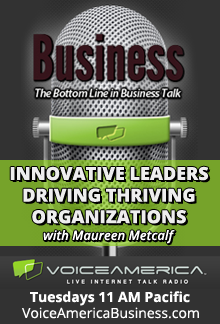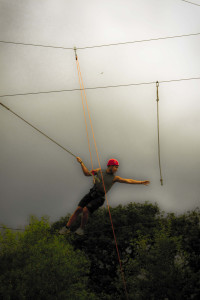As we prepare for the inaugural broadcast of the Voice America Innovative Leaders Driving Thriving Organizations, we wanted to share a bit of what you might hear in the first show focusing on Leadership 2050.
Susan Cannon, renowned futurist, university faculty member, consultant and author, shares some of the competing trends we might expect to see. One thing that is clear from all of her work is the movement toward complexification and its connection to leadership, and the clear conclusion that leaders need to update their leadership âoperating systemâ to respond multiple concurrent changes that will impact leaders and the businesses they run for the rest of most of their careers.
So, here is a preview of some of the trends Susan will talk about and what she has taken away from what she has seen.
1.Letâs start with the fact that the next 30- to 35 years is going to be even more dramatically different than the last. This is difficult to fathom because the past nearly half a century has been rife with monumental changes in technology. Susan has been watching inventor Ray Kurzweil for the last 20 years because he has been incredibly accurate in his technology forecasts. Now heâs director of engineering at Google, and he predicts that at the comparative rate for technological change based on 2001, the twenty-first century will experience 20,000 times more change than the twentieth century. So thatâs a lot to be adapting toâand technology is just one sector of change.
2.Scanning the current literature in futures and foresight studies, professional scenarios, and government-sponsored research on global trends, is pretty sobering. Among the more likely trends are systemic change drivers such as abrupt climate change and sudden global financial disruptionâthose are biggies. Also, we see the possibility of unsustainable levels of production and consumption reaching a tipping point that rapidly deteriorates the biosphere. Likewise, runaway pandemics are a threat. We could see an even greater surge of armed conflict/failing states/terrorism potentially with weapons of mass destruction, and catastrophic water shortages over large parts of the earth.[i] Any of these trends have the potential of driving secondary trends.
3.Positive trends that came out of Susanâs doctoral research focusing on 2020, included a trend toward the feminine values. Its continued growth indicates that it will be a long-term trend. She also concluded that two of the most powerful levers of change toward a positive future would be the changes in the institution of business (especially as conscious or enlightened capitalism continues to emerge) and a greater emphasis on developing and promoting women leaders.
4.Former Vice President Al Gore, who is clearly a prescient guy, recently wrote a well-researched book called Six Drivers of Global Change. He concluded that âthere is no prior period of change that remotely resembles what humanity is about to experience.â Gore talks about a âvacuum of leadershipâ and clearly supports the view that we need a radical new plan in leadership development.
The bottom line is that there is overwhelming evidence that we are already in a perfect storm of increasing complexity, accelerating change, and near constant uncertainty that exceed the mental and emotional capacities of most leaders. If leaders are overwhelmed by complexity, change, and uncertainty now, how will they cope in the future?
This isnât intended to create fear; itâs actually good news. Historically, whenever the pressure of life conditions threatens our existence as a race, a new and more complex stage of consciousnessâyou can call it a mindset with a corresponding cultureâhas emerged. In a sense we are forced to evolve, forced to innovate and transform ourselves for our own good! There is a strong mandate for leaders to innovate and transform themselves so they can drive thriving organizations.
Even more promising is that through the study of how humans and cultures evolve over time, we know that already there is a small but increasing percentage of the population who has the mindset and capacities with the complexity and nuance that will be needed for 2050. They offer a blueprint we want to encourage.
Please tune in to the show to hear more directly from Susan about the trends, and from Mike Morrow-Fox about the leadership mindset and how to develop it.
Note: This post is drawn from a much more in-depth analysis conducted by Susan in a chapter co-authored by Susan Cannon, Mike Morrow-Fox and Maureen Metcalf in the upcoming International Leadership Association Book Leadership 2050: Critical Challenges, Key Contexts, and Emerging Trends (Emerald Group Publishing, 2015). This chapter includes a more comprehensive analysis as well as thorough referencing of all trends.”
Photo credit: www.flickr.com blmoregon






